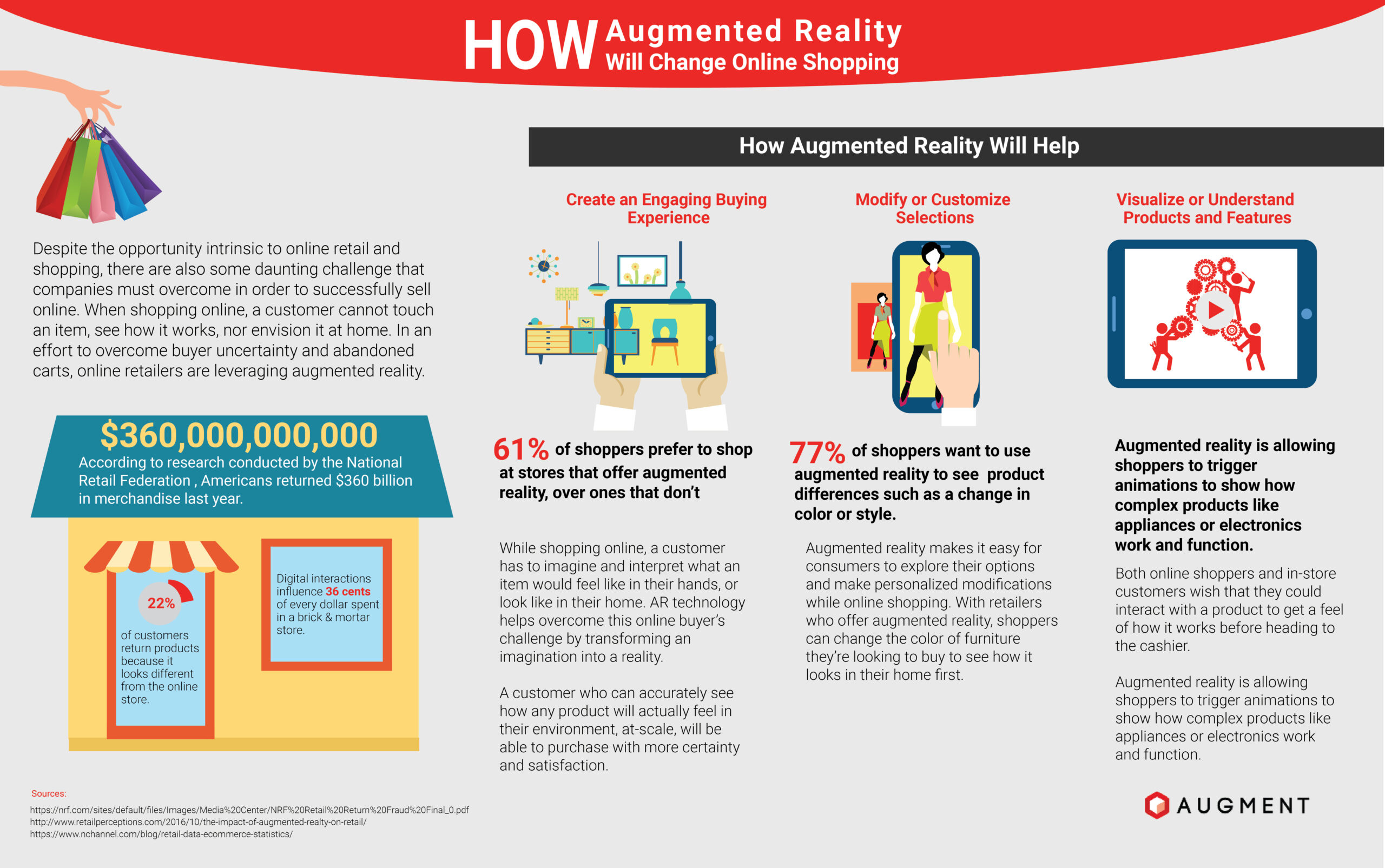In the last year, American consumers returned $360 billion worth of merchandise that was purchased online. Nearly a quarter of consumers returned these items for looking different in person than it looked online. With the help of Augmented Reality, this high return rate is expected to decrease. 61% of shoppers prefer to shop at stores that offer Augmented Reality for assistance. Adding Augmented Reality to a store’s app or website creates an engaging buying experience and allows the consumer to experience what the product would be like in reality. This in-turn creates a more confident purchase. 77% of consumers want to be able to use AR to customize products and have the opportunity to see how various styles or color options would look in reality. Additionally, for electronics or appliances that consumers may find difficult to use initially, AR steps in with animations to show how the products work and function before purchase. By introducing Augmented Reality to retailer websites, consumers will already have had the opportunity to see products in a real world environment and will have learned about its functionality. This will allow comsumers to overcome buyer uncertainty, creating confident purchases and satisfied customers.
Below is the full infographic by Augment:
